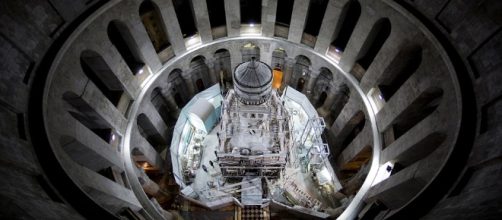What is believed to be the tomb of Jesus Christ could collapse unless structural work is done on its foundation, according to scientists. This was discovered after a team completed the restoration project on the site in Jerusalem.
The tomb of Jesus is thought to be where Jesus was buried over 2,000 years ago. In 1555, the site was covered in marble to keep people from taking pieces of dirt and rocks as souvenirs.
The timing of the scientists' warning is interesting since Christians all over the world will celebrate the death, burial and resurrection of Jesus on Easter Sunday on April 16, which is less than a month from now.
Newly restored tomb
The National Technical University of Athens recently completed a $3.3 billion restoration project on the tomb. The group discovered that more work needs to be done to protect the tomb from caving in. Additional work will be just as costly, or it might be more costly because of the delicate nature of the work to prevent the collapse while working on the site.
National Geographic reports that millions of people visit the site every year. After the recent restoration, the tomb opened back up to the public at the Church of the Holy Sepulchre in Jerusalem. However, future visits are uncertain because of the additional work that has to be done.
The team that restored the tomb worked on portions of the walls and columns to protect the structure.
In the process of completing that phrase of the work, members of the restoration team agreed that something needs to be done soon in order to fully protect the tomb of Jesus and to keep it from collapsing. The National Technical University of Athens estimated that it would be a multimillion dollar job over a 10-month period to make sure the tomb doesn't collapse.
About the structure
The structure believed to be where Jesus was buried is on an unstable foundation of old debris and hollow tunnels. Underground radar and other equipment showed that parts of the tomb are still stable. What concerns scientists is that some parts of the tomb have eroded over the years from age and exposure and are in dire need of repair.
Speaking to the National Geographic last Wednesday, Antonia Moropoulou, chief scientific supervisor, said unless something is done soon, the collapse will definitely be a rapid and catastrophic process.

